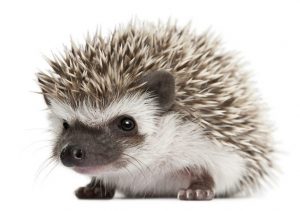Cornell University scientists have developed a computer program, Environmental Monitoring With an Agent-Based Model of Listeria (EnABLe), to simulate the most likely locations in a processing facility where the foodborne pathogen Listeria monocytogenes might be found. Food safety managers may then test those areas for the bacteria’s presence, adding an important tool to prevent food contamination and human exposure to the pathogen through tainted food.
 The computer model, which is described in the Jan. 24 issue of Scientific Reports, has the potential to be modified for a wide range of microbes and locations.
The computer model, which is described in the Jan. 24 issue of Scientific Reports, has the potential to be modified for a wide range of microbes and locations.
“The goal is to build a decision-support tool for control of any pathogen in any complex environment,” said Renata Ivanek, associate professor in the Department of Population Medicine and Diagnostic Sciences and senior author of the paper. The study was funded by the Frozen Food Foundation through a grant to Martin Wiedmann, professor of food science, who is also a co-author of the paper.
The researchers, including first author Claire Zoellner, a postdoctoral research associate in Ivanek’s lab, want to eventually apply the framework to identifying contamination from pathogens that cause hospital-acquired infections in veterinary hospitals or E. coli bacteria in fruit and vegetable processing plants.
Food safety professionals at processing facilities keep regular schedules for pathogen testing. They rely on their own expertise and knowledge of the building to determine where to swab for samples.
“Whenever we have an environment that is complex, we always have to rely on expert opinion and general rules for this system, or this company, but what we’re trying to offer is a way to make this more quantitative and systematic by creating this digital reality,” Ivanek said.
 For the system to work, Zoellner, Ivanek and colleagues entered all relevant data into the model – including historical perspectives, expert feedback, details of the equipment used and its cleaning schedule, the jobs people do, and materials and people who enter from outside the facility.
For the system to work, Zoellner, Ivanek and colleagues entered all relevant data into the model – including historical perspectives, expert feedback, details of the equipment used and its cleaning schedule, the jobs people do, and materials and people who enter from outside the facility.
“A computer model like EnABLe connects those data to help answer questions related to changes in contamination risks, potential sources of contamination and approaches for risk mitigation and management,” Zoellner said.
“A single person could never keep track of all that information, but if we run this model on a computer, we can have in one iteration a distribution of Listeria across equipment after one week. And every time you run it, it will be different and collectively predict a range of possible outcomes,” Ivanek said.
The paper describes a model system that traces Listeria species on equipment and surfaces in a cold-smoked salmon facility. Simulations revealed contamination dynamics and risks for Listeria contamination on equipment surfaces. Furthermore, the insights gained from seeing patterns in the areas where Listeria is predicted can inform the design of food processing plants and Listeria-monitoring programs. In the future, the model will be applied to frozen food facilities.


